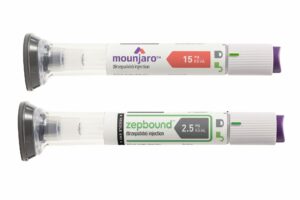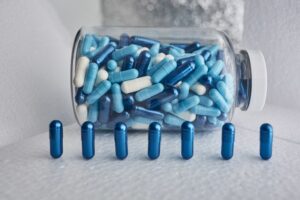Anti-aging is no longer the stuff of science fiction. With advancements in biotechnology, understanding how our bodies age and finding ways to slow down this process has become a reality. Two significant breakthroughs in this field are NMN (Nicotinamide Mononucleotide) and NAD (Nicotinamide Adenine Dinucleotide). In this blog, we’ll explore how these molecules play a vital role in rejuvenating our cells and what makes them the focus of contemporary anti-aging research.
Understanding the Biology of Aging
The aging process is a complex web of physiological changes, where our cells lose vitality and function over time. Understanding how this happens at a molecular level helps in discovering interventions that can make aging less daunting.
As we age, our bodies go through a range of changes that not only make us susceptible to various diseases but also drastically impact our day-to-day function. These changes are driven by a decline in cellular processes, which can be partially attributed to alterations in our DNA. One critical factor is the decrease in the efficiency of mitochondrial functions—the powerhouse of our cells—resulting in less energy production, increased oxidative stress, and cellular damage. Scientists are honing in on these cellular transformations to develop therapeutic strategies aimed at slowing down or even reversing certain aspects of aging. This understanding is key in aligning plans for healthy aging with lifestyle choices, which encompass diet, exercise, and possibly supplementation with essential cofactors like NMN and NAD. Through these interventions, we aspire to not only extend the lifespan but also improve the quality of life.
What are NMN and NAD?
NMN stands for Nicotinamide Mononucleotide, a precursor to NAD, or Nicotinamide Adenine Dinucleotide. Both play crucial roles in our cells’ energy metabolism. These molecules act as coenzymes, assisting in the chemical reactions needed to convert nutrients into cellular energy, a process primarily happening in mitochondria. When NAD levels are adequate, cells perform optimally, aiding in DNA repair, cellular communication, and overall function. However, as we age, NAD levels naturally decline, compromising these vital processes. It’s this decline that has become a target for researchers interested in anti-aging interventions, as replenishing NAD levels is believed to rejuvenate cellular functions and enhance overall health and longevity.
The Role of NAD in Cellular Repair
NAD is essential for repairing damaged DNA, maintaining cell survival, and regulating circadian rhythms. Its levels naturally decline with age, leading to the progressive deterioration of cell functions.
NAD supports cellular repair by activating enzymes called sirtuins and PARPs, both pivotal in maintaining genomic stability and protecting against age-related dysfunctions. Sirtuins, sometimes termed ‘longevity proteins,’ heavily rely on NAD to function. They regulate cellular health by mobilizing repair mechanisms, thus playing a critical role in combating stressors like UV exposure and pollution that can accelerate aging. Moreover, in terms of DNA repair, NAD-dependent PARPs help rectify DNA strand breaks, ensuring genomic integrity. This process is vital, as accumulated DNA damage can lead to the malfunctioning of cells and, consequently, diseases. Therefore, maintaining optimal NAD levels is not only crucial for immediate DNA repair but is also a proactive strategy against long-term degenerative conditions. By enhancing NAD availability, we can promote cellular longevity and bolster the body’s defensive arsenal against the daily wear and tear every cell encounters.
In addition to acting as a safeguard ensuring our genetic material remains intact, NAD is crucial in mediating cellular stress responses and maintaining the mitochondrial network within cells. It plays a role in the adaptive response to environmental stressors by adjusting energy output and protecting cells from undergoing premature apoptosis (cell death). As NAD levels drop, so does the efficiency of these protective measures, contributing to cellular senescence—where cells cease to divide and grow but do not die, impacting tissue function and regeneration. This understanding has shaped novel therapeutic avenues that focus on continually replenishing NAD supply to sustain cellular resilience and foster a healthy cell cycle, even in advanced age. With ongoing advancements, supplementing NAD has the potential to not only reverse cellular aging but also improve metabolic function and promote better health outcomes across various physiological systems.
How NMN Boosts NAD Levels
Supplementing with NMN can effectively elevate NAD levels in the body. This increase supports cellular repair mechanisms, enhances energy production, and contributes to healthier aging.
NMN supplementation is gaining traction as a practical approach to elevate NAD, owing to its efficient conversion within the body. Unlike other precursors, NMN bypasses certain metabolic pathways, leading to more direct and efficient NAD synthesis. This streamlined conversion is crucial for aging populations, where timely bioavailability is necessary to counteract the rapid decline of NAD. Studies have shown that regular NMN intake not only boosts NAD but also leads to an increase in energy metabolism and a reduction in oxidative stress within cells. This dual effect enhances muscle function, improves endurance, and supports the overall resilience of tissues. By improving NAD availability, NMN supplementation helps maintain optimal cellular function, potentially staving off age-related diseases and boosting quality of life.
Clinical Studies and Findings
Recent studies have shown promising results in animal models, where NMN supplementation led to improved lifespan and healthspan, sparking interest in potential human applications.
The scientific community has been buzzing with studies focusing on the benefits of NMN, showcasing its potential to combat various aging-related degenerative issues. For instance, research conducted on mice suggests that NMN supplementation can significantly enhance several physiological functions, ranging from improved insulin sensitivity to increased energy levels. This has implications for addressing metabolic disorders like diabetes and bolstering muscle endurance. Additionally, some studies attribute NMN with improving cognitive function by enhancing blood flow and nutrient supply to the brain. While animal studies serve as a valuable proof of concept, translating these benefits to human systems requires careful and extensive research. Current clinical trials on NMN are investigating doses, long-term safety, and its effects on humans, providing insight into how NMN could be integrated into mainstream anti-aging therapies.
Potential Risks and Considerations
While NMN and NAD therapies offer exciting possibilities, they are not without risks. Potential side effects and the need for long-term studies underline the importance of proceeding with caution.
Though regarded as a promising supplement, NMN use is not devoid of safety concerns. Initial studies suggest that while NMN exhibits a high tolerance in human subjects, comprehensive conclusions on its safety profile, particularly over long durations, have yet to be drawn NMN Safety and Efficacy Concerns. Some reported effects include mild gastrointestinal disturbances and adjustments in liver enzyme levels, underscoring the necessity for medical oversight. Additionally, the quality of commercially available NMN supplements can vary, with factors such as purity and presence of additives influencing its safety and efficacy. As more clinical trials are conducted, guidelines around recommended dosages may shift, making it imperative for potential users to seek professional medical advice before commencing any supplementation regimen.
Unlocking the Future of Anti-Aging with NMN and NAD
As we peel back the layers of aging, NMN and NAD emerge as promising keys to not only extending lifespan but enhancing the quality of life. Although these therapies hold immense potential, it is crucial to consult healthcare professionals before starting any new treatment. With ongoing studies and growing interest, we are on the brink of revolutionary advancements in anti-aging science that could redefine how we experience aging.














5 Responses
Ive read several just right stuff here Certainly price bookmarking for revisiting I wonder how a lot effort you place to create this kind of great informative website
Hi my friend! I wish to say that this post is awesome, nice written and include almost allimportant infos. I would like to look more posts like this.Feel free to visit my blog post — nortel certification
Every time I visit your website, I’m greeted with thought-provoking content and impeccable writing. You truly have a gift for articulating complex ideas in a clear and engaging manner.
Your blog is a testament to your expertise and dedication to your craft. I’m constantly impressed by the depth of your knowledge and the clarity of your explanations. Keep up the amazing work!
I wanted to take a moment to commend you on the outstanding quality of your blog. Your dedication to excellence is evident in every aspect of your writing. Truly impressive!